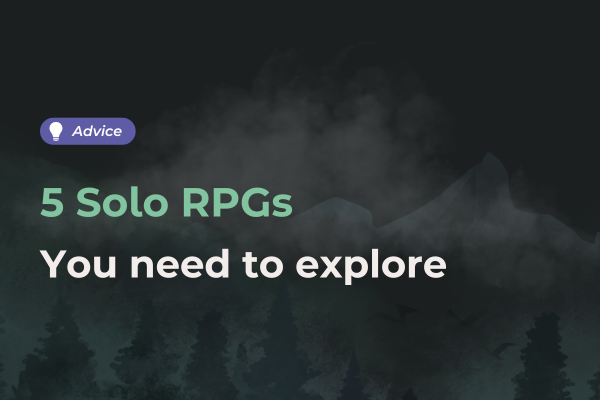
8 tips for successful storytelling

As a game master, writer or scriptwriter, storytelling plays an important role in your narrative. To imagine and write a good script, you need to follow a few essential rules. Discover our tips for a successful storytelling.
Set your story in a world
Every good story needs a context, so before you start writing your plot outline, you should focus on your world first. Think of all the novels you've read, the roleplaying games you've played or the movies you've watched: you're bound to know a lot of information that isn't a core part of the story, but simply a detail of the universe it happens in.
The universe is the foundation upon which the characters and their issues are built. You should thus define the main features of your world before you write your story. These elements will create essential foundations for your story.
If you want to create a detailed world, we recommend using Lore, our worldbuilding software. You'll be able to organize all your notes on the geography, culture, people and society of your world. These elements, sorted in their respective categories, will be at hand as you write your story.
Here is an example of creating a template for all the important characters in the story. You can then enter the relevant information for each character within this template.
Define a main conflict
Every story has a main conflict. It serves as a common narrative thread throughout your RPG campaign, book, film or show. Of course, this central conflict can be enhanced by the addition of peripheral or tangential events.
The main characters in your story may have a common problem to solve but are also likely to have their own personal quests — that may even be, sometimes, incompatible with one another.
To make a good story, develop a main conflict that binds the characters together. They must all have a genuine personal interest in participating in the action.
Develop your characters
The more developed your characters, the easier it will be to follow your story and understand what's at stake. We recommend you develop your characters by carefully considering their own history, personality and psychology, as well as their impact on the universe.
In Tome, our storytelling software, you can create memo cards summarizing all important character information. These memos can also be used for places, objects or organizations.
In the case of roleplaying, there is also a memo card specifically for players. This will allow you to keep their feedback, availability, contact information and the characters they have played during your RPG sessions in one place.
Use a narrative scheme
Every good story has a narrative structure comprised of 3 acts: Introduction, Conflict and Resolution.
Of course, the path between said acts can vary greatly in length. However, to ensure that you create a comprehensible story, you need to follow a concise narrative outline.
Side quests are generally integrated somewhere between Conflict and Resolution. You can, however, add a short quest between the Introduction and the Conflict.
If you're about to create a role-playing campaign, this short quest can help players get to know their characters and start working together.
Bring in the emotion
Bring emotion into your story to make a powerful impression. Think of all the adventures of your favorite characters: they've surely been confronted with complex choices, or experienced both playful and tragic moments.
To get the most emotion out of your stories, confront your characters, and therefore your players, with difficult situations.
If I'm to choose between one evil and another, then I prefer not to choose at all. - Andrzej Sapkowski, writer known for The Witcher book series.
Emotion plays a key role in storytelling: it's what will captivate your audience!
Mix and match formats and interactions
To avoid creating a boring story, we recommend varying formats and interactions. For example, if you decide to describe an investigation, avoid repeating the same format for finding clues: suspect, interrogation, debrief. Investigators can find clues by inspecting locations, testing new leads, questioning characters that are more or less distant from the suspects, and so on.
Finally, don't forget interactions! To avoid monotony in your story, vary the location of encounters, bring in interesting characters or add surprises and traps!
Create coherence in your world
Be careful - you don't want to lose the attention of your players, readers or viewers! You need coherence between scenes and events to ensure that your audience understands what's going on. This is where storytelling plays a key role!
To ensure that your characters' actions and events are logical, always keep an eye on your world. If you're using the Amsel Suite, you can connect both programs together. This makes it easy to link the places, characters and societies in your world.
Here, for example, we've created the character Theodor in Tome and can see all the elements we’ve linked to him.
You can also add a custom map with pins. This helps keep track of character movements and helps you remember where specific actions should take place.
Experiment and improvise
No matter whether you're a beginner or an experienced writer, you're bound to make mistakes when creating a plot. Don't worry, there's always a solution!
If you're writing a story for a show or a novel, have someone else read it over. An outside perspective will enable you to take a step back from your work and adjust certain elements.
If you're a game master, you can always run through your story with your players and improvise. Once you've finished your first RPG session, ask the players for their feedback, make changes and use them during your next session. You can also read through our tips for improvising as a GM.
Creating a story can be a long and complex process, but with the right tools, such as our storytelling software, it's easy to get the hang of it!





